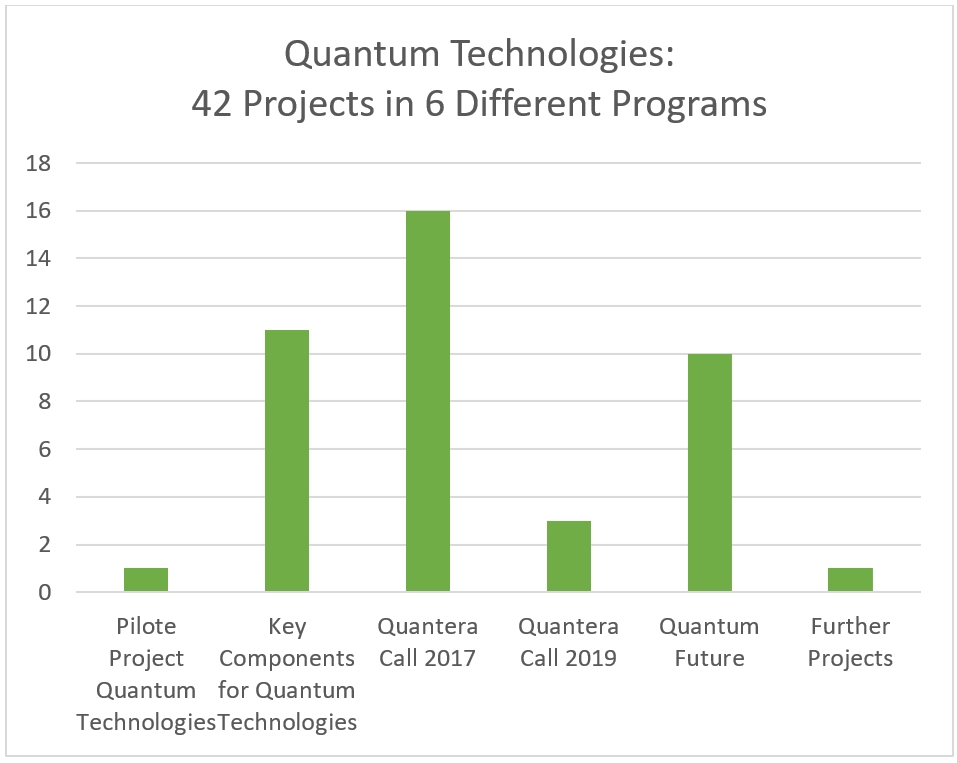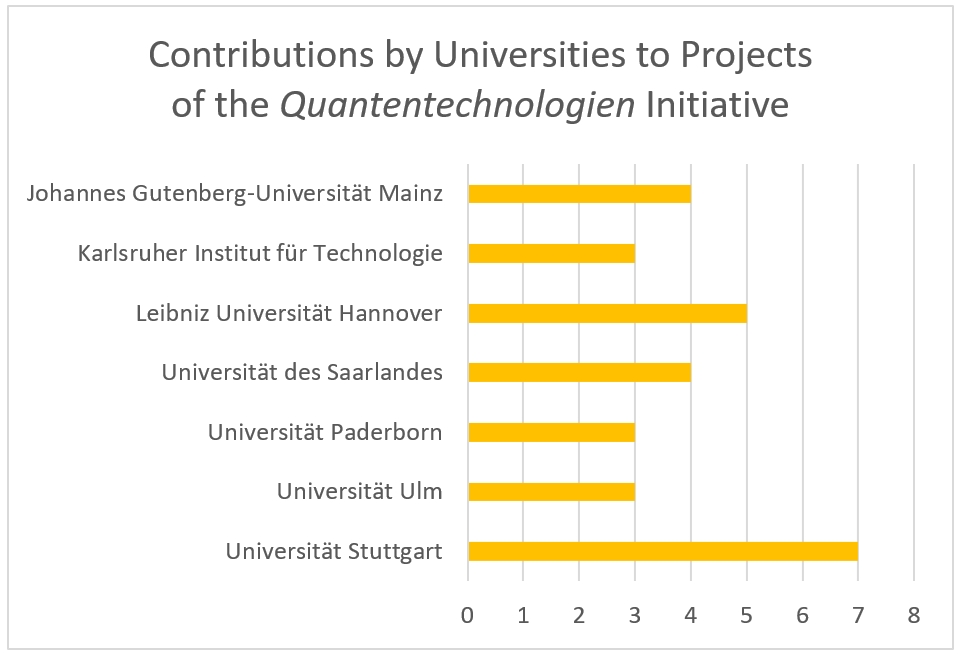![]()
[Image: peterschreiber.media/Getty Images]
This is the third article in a series describing public research funding in Germany. Claus Roll is a director of research and program development for OSA Europe.
In this third in a series of OPN stories, we explore funding for optics and photonics research by the German Federal Ministry of Education and Research (BMBF)—which is, not surprisingly, the country’s largest federal spender of research funds. We focus in particular on three initiatives of the ministry that directly fund research and technology transfer or support work to create more secure conditions for the digital world: Photonik Forschung Deutschland (Photonics Research Germany), Quantentechnologien (Quantum Technologies) and Selbstbestimmt und sicher in der digitalen Welt (an initiative focused on IT security).
Photonik Forschung Deutschland
This funding initiative for photonics was launched to support the development of new technologies in growing markets, through applied research. Typically, joint projects are funded involving contributions from the entire value chain, stretching from research institutes to companies. During 2018, 120 projects received funding from the BMBF via this initiative. The total budget that year was approximately €63 million (US$75 million), with the level of funding per project ranging from €35,000 to €2.8 million.
As the project website indicates, among public research institutions, both universities and two of Germany’s big public–private research institutes, Fraunhofer and Leibniz, have been drawn to this applied-research funding program. (We’ve provided a series of tables showing the universities, institute programs, and companies with the largest numbers of funded projects under this initiative.)
A few examples of projects, networks and the funding provided by the BMBF under the Photonik Forschung Deutschland project are FINDLING (frequency-stabilized diode lasers for metrology and life science), MULTI-3D (focus-modulating modal 3D sensors), SPEED (silicon photonics for exascale data networks), INTERPHASE (organic-electronics design), and PRINTOPTICS (3D-printed micro-imaging systems). These projects cover a diverse range of collaborations, combinations and funding schemes—between companies of all sizes and research institutions; among different research institutions; in small or large networks; short-term to long-term projects; partial or full funding. The purpose of the research may be the development of a product (FINDLING), an entire technology (INTERPHASE) or anything in-between.
Quantentechnologien
The second BMBF funding initiative with contributions to photonics and optics aims to support application-oriented collaborative research in quantum technologies. This program was initiated in 2016–17, alongside the EU Quantum Flagship program, and launched by the BMBF in 2018. The overall aim of the BMBF Quantentechnologien initiative is to develop quantum into an economically relevant technology for industry.
We looked at the selected research projects in this initiative that covered the year 2020, to try to get a grip on a yearly research budget. We identified 42 projects, falling into five different programs (see chart at right). In 11 of them, companies are partnering with research institutions (universities and non-university research centers) or with other companies. The remaining 31 projects involve only research institutions, either working alone (25 projects) or in collaboration with other institutions.
Seven universities have been particularly active in contributing to projects in this initiative (see chart at right). Amongst the non-university research centers, the Helmholtz-Association-affiliated Forschungszentrum Juelich contributes to three different projects, and the Fraunhofer Institute for Applied Optics and Precision Engineering (IOF) contributes to two.
Putting the 2020 numbers together for these projects, we found that the total yearly spend was approximately €20 million—in projects ranging from a yearly BMBF contribution of €60,000 to €3.2 million, and with the number of participating entities varying from one to eight.
Selbstbestimmt und sicher in der digitalen Welt
While this initiative has a broader scope, it does fund research in optics and photonics, via different projects in areas such as quantum communication, wireless optical communication and increasing optical-fiber network capacity. At least 12 of the initiative’s projects in 2020 included research in optics and photonics. As in other two initiatives described above, the projects range from single participating entities to large networks with up to 19 entities; three of the projects also include international partners. The 12 optics-and-photonics-related projects received total BMBF funding of approximately €20 million.
Out of the 30 universities contributing to these 12 projects, Ludwig Maximilians University Munich, Technical University Munich, and Heinrich Heine University Düsseldorf were the biggest contributors. Among Fraunhofer institutes, the Heinrich Hertz Institute in Berlin had five contributions, the Max Planck Institute for the Physics of Light, Erlangen, had four and the German Research Center in Oberpfaffenhofen had two. Some 17 further contributions in these projects came from industry, where ADVA Optical Networking SE, Meiningen and Highstreet Technologies GmbH, Berlin, had two contributions, with all other companies having only one.
The two projects receiving the most 2020 funding were QuNet—or, more precisely, QuNet-Alpha, the first phase of this seven-year project—and Q.Link.X. QuNet’s aim is to work on secure communication infrastructure and technologies via quantum networks. The Q.Link.X partners work on quantum repeaters that would allow long-distance quantum communication in fiber optic networks. OptiCON, the only project coordinated by an industrial partner (ADVA), is another interesting example; this project’s aim is using both hardware and software improvements to increase the capacity of optical networks.
Summing up the BMBF picture for optics and photonics
Putting all of this together, the BMBF spends a total of €103 million yearly on funding of these three programs that lie fully or partly the domain of optics and photonics. We note that this investment is particularly targeted to connecting academic research with industry, in order to facilitate technology transfer and to set up infrastructure and knowledge for secure IT.
There’s also an important caveat. The most recent developments in funding of quantum technologies in Germany, initiated during summer 2020 and with an announced total funding value of €2 billion through 2024, are not covered in the data outlined above. A road map has been established, but strategic discussions about where and how the money will be spent are still ongoing. We hope to provide an update on this topic in a future OPN article.
The final story in this four-article series will look into optics and photonics funding by Germany’s network of public–private research institutes—particularly the Fraunhofer Institutes.



